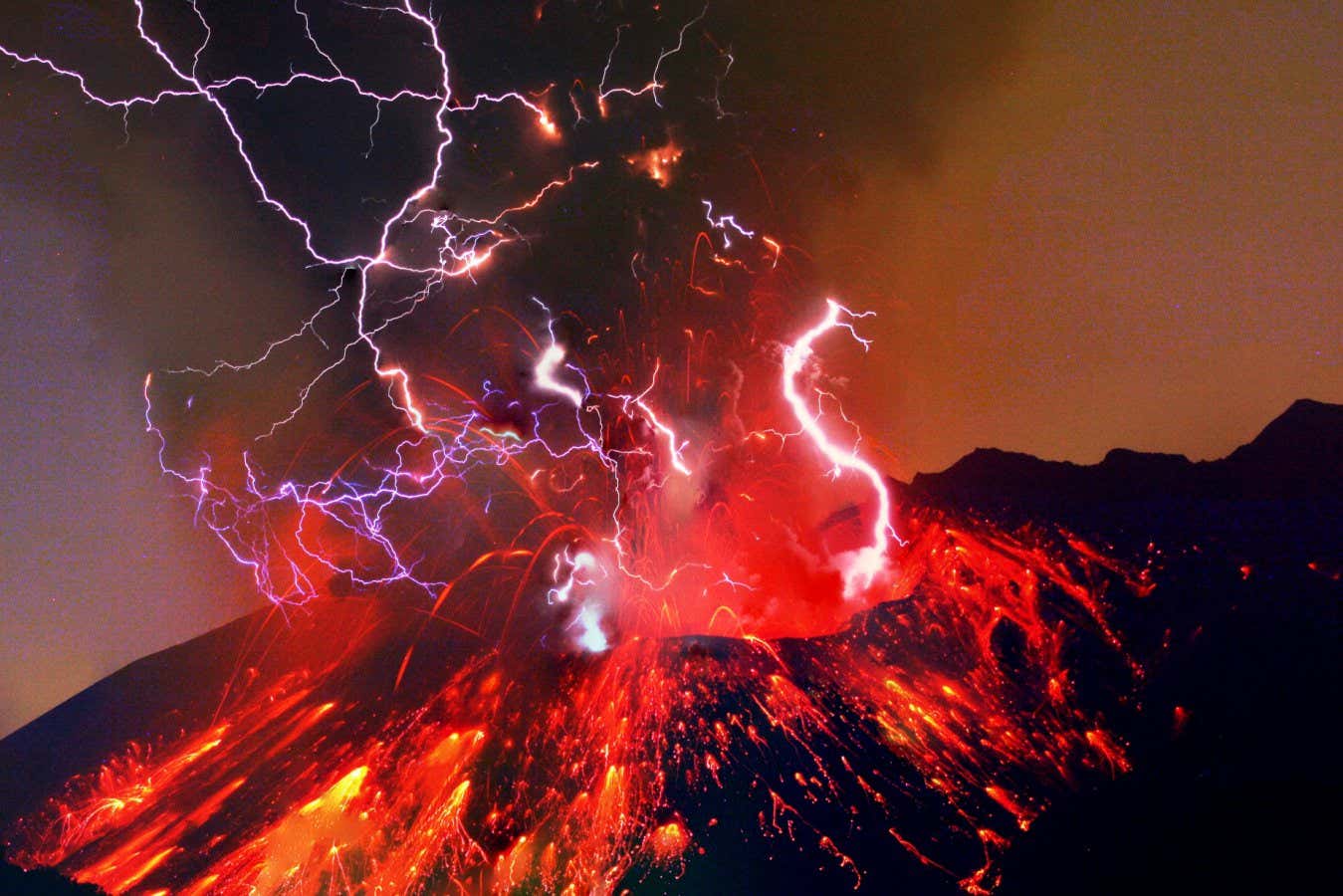Lightning strikes during volcanic eruptions could have provided nitrogen in a form that was needed by early life forms
By Michael Le Page
5 February 2024
The volcanic lightning that occurs within ash clouds emitted during some volcanic eruptions could be a source of nitrogen
Mike Lyvers/Getty Images
An analysis of volcanic rocks has revealed large quantities of nitrogen compounds that were almost certainly formed by volcanic lightning. This process could have provided the nitrogen required for the first life forms to evolve and thrive.
Nitrogen is a key component of the amino acids that are strung together to make the proteins on which all life depends. While nitrogen gas is abundant, plants can’t convert it into a usable form as they can with carbon dioxide.
Instead, plants get much of their nitrogen from bacteria that are capable of “fixing” the gas by converting it into nitrogen compounds, such as nitrate. But nitrogen-fixing bacteria didn’t exist when life first evolved, says Slimane Bekki at Sorbonne University in Paris, so there must have been a non-biological source early on.
Advertisement
Read more
A radical new theory rewrites the story of how life on Earth began
The lightning from thunderstorms is one possible origin. This produces a relatively small amount of nitrates today but might have been important early in Earth’s history. The famous Miller-Urey experiment in the 1950s demonstrated that lightning in Earth’s early atmosphere could have produced nitrogen compounds, including amino acids.
Now, Bekki and his colleagues have shown that another source could have been the lightning that occurs in ash clouds during some volcanic eruptions.
